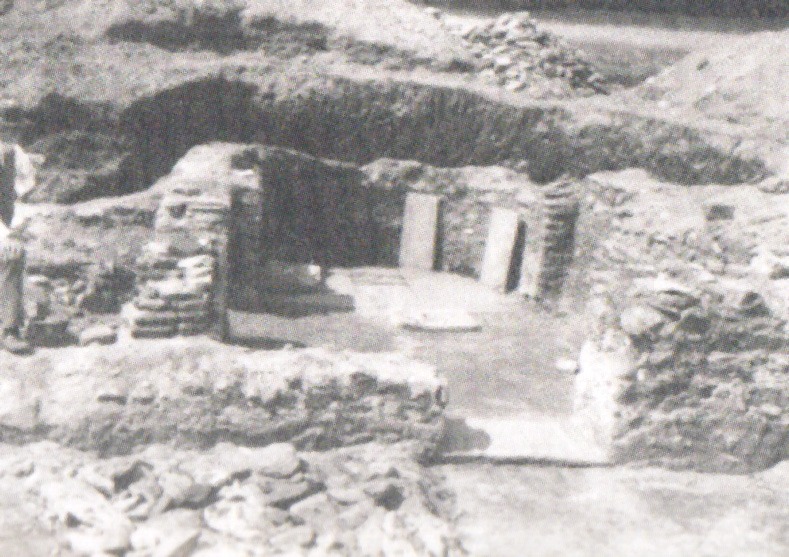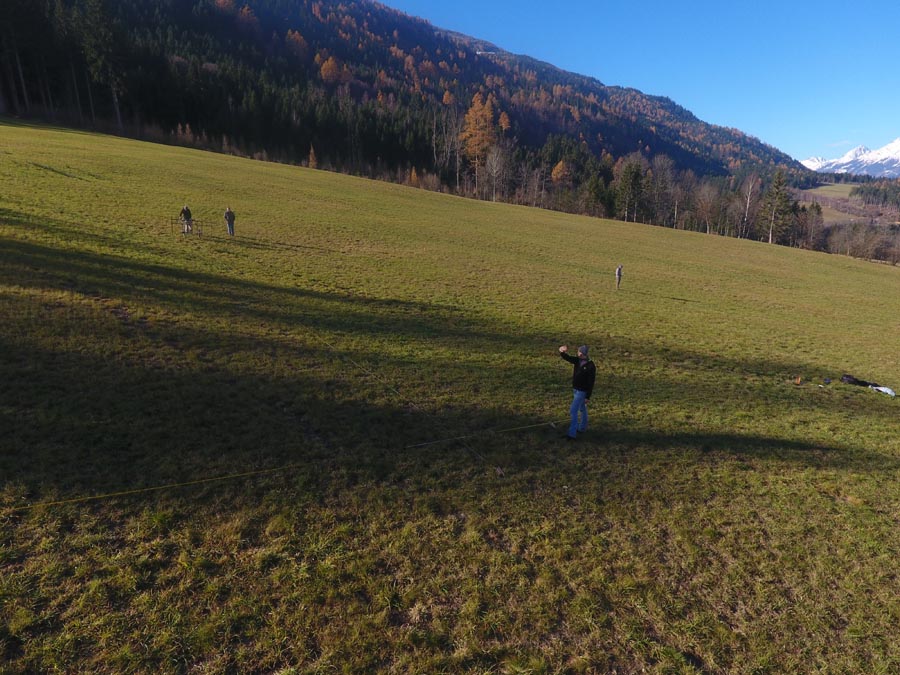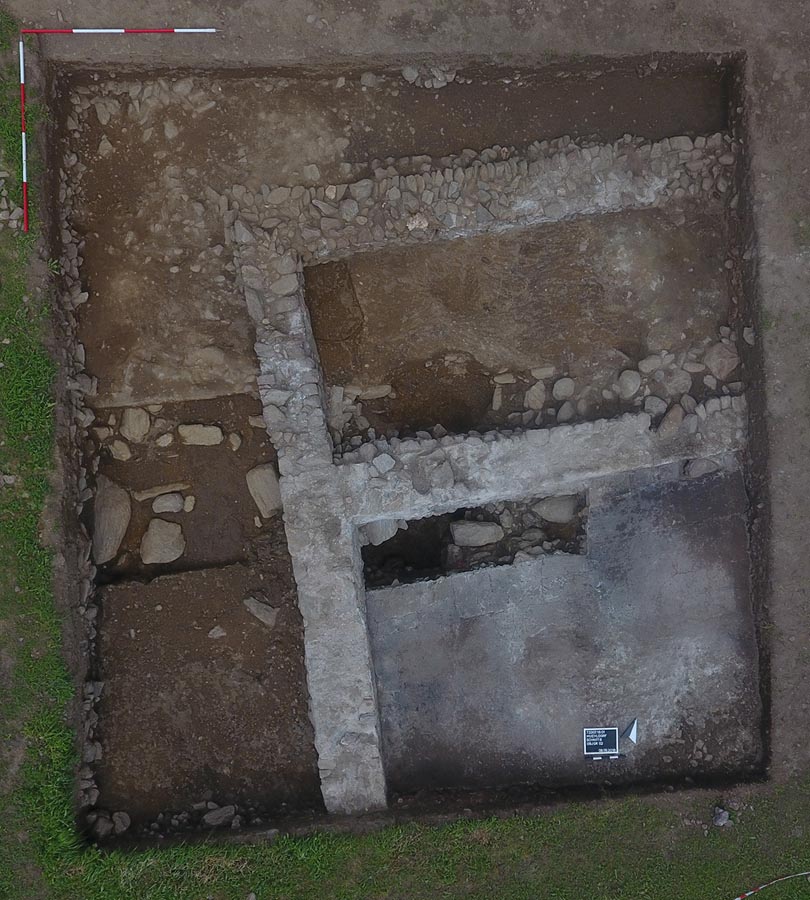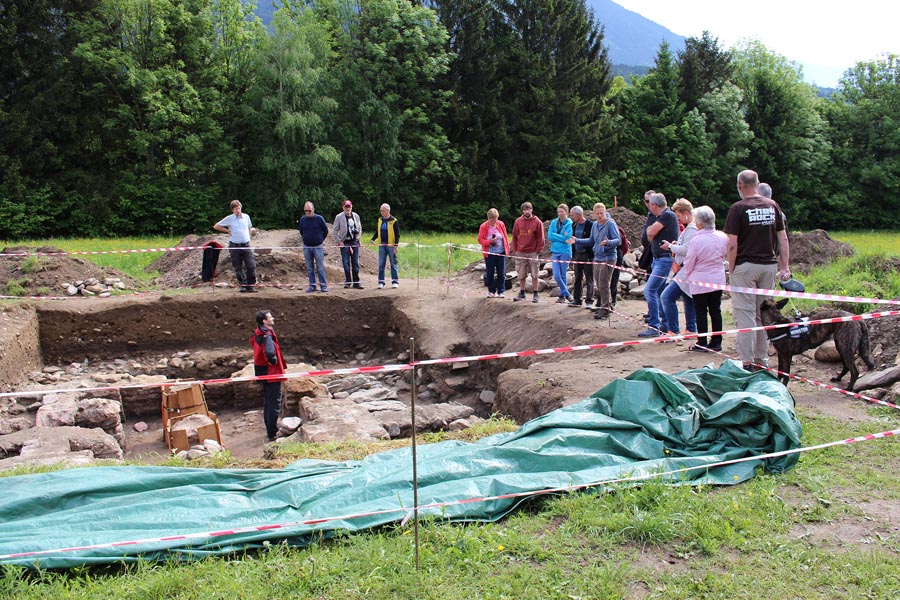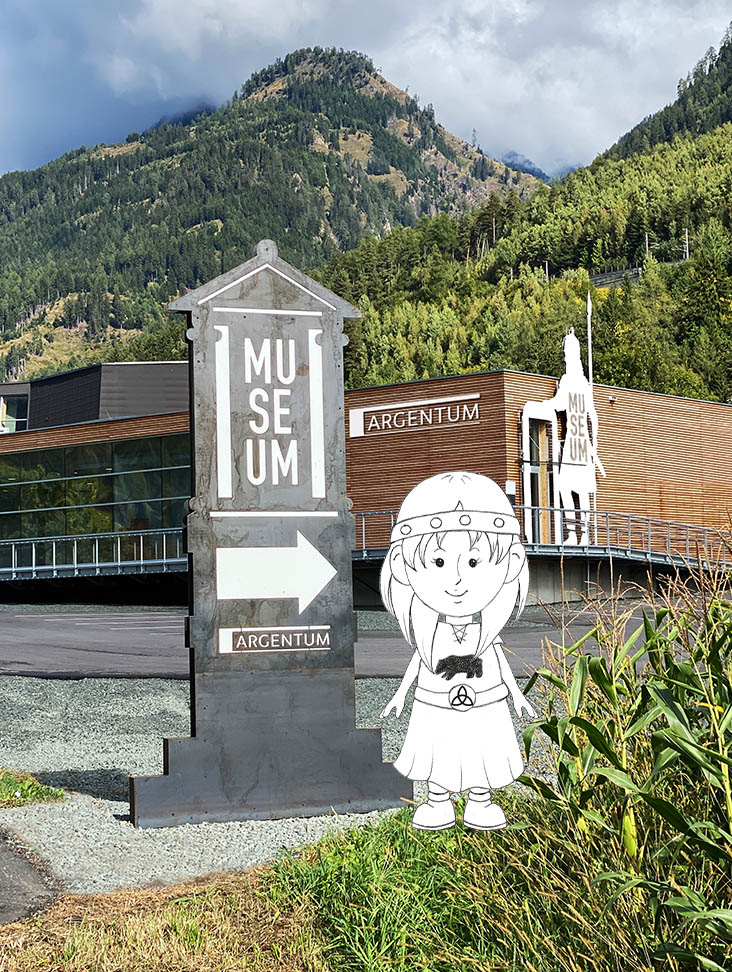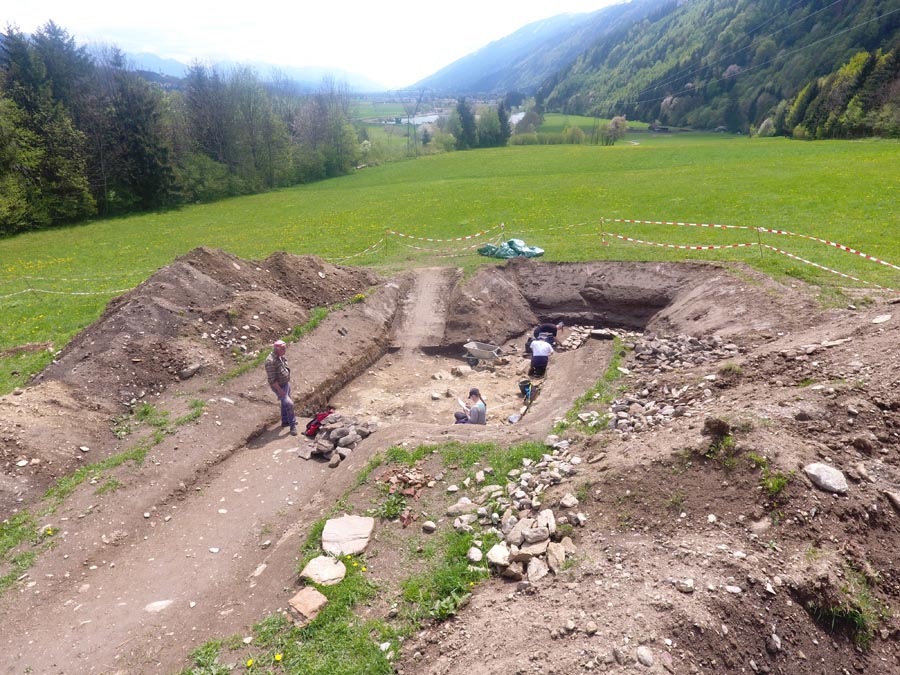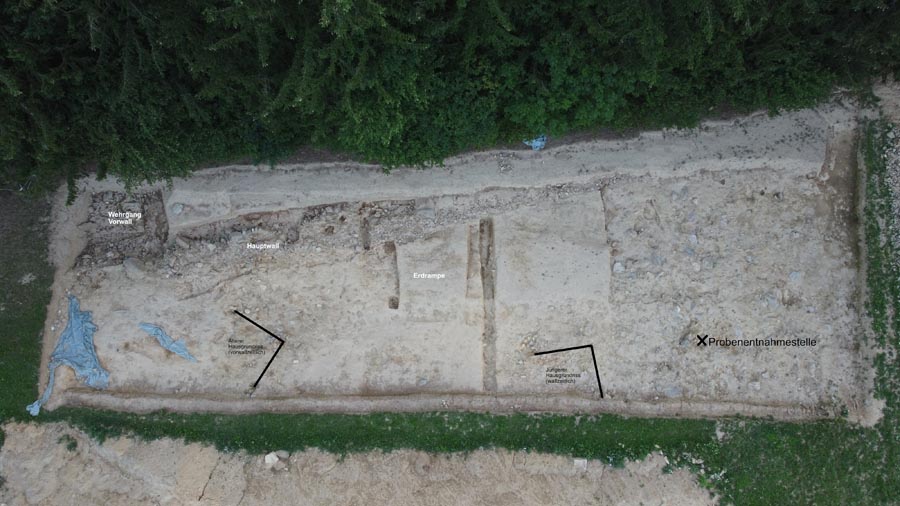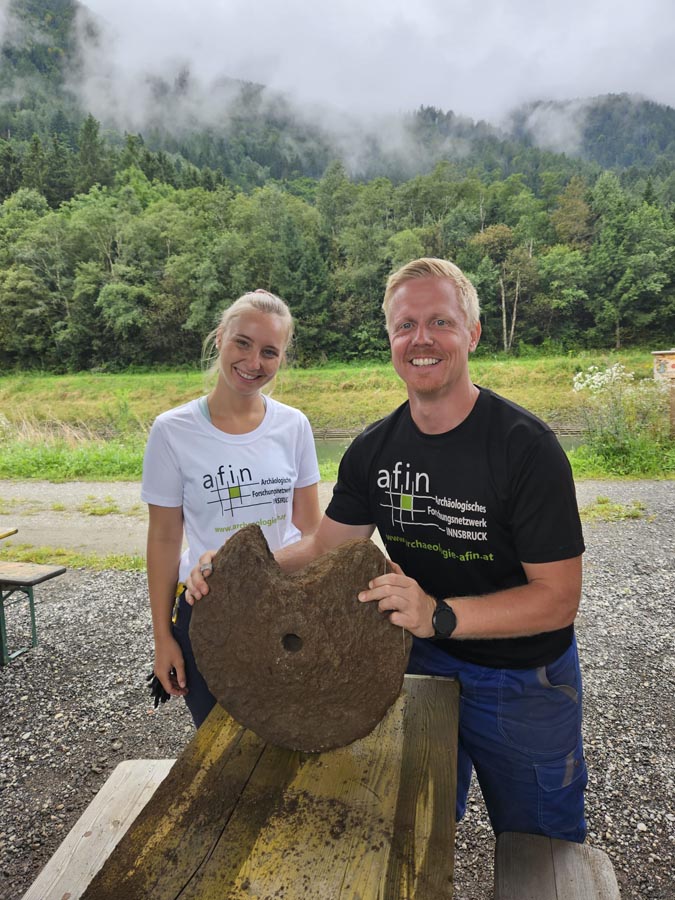Research history
1898: The Roman baths at Mühldorf in Möllthale
In 1898, under the direction of Eduard Nowotny, a 300 square metre Roman bath building was successfully excavated on the Haselangerwiese in Mühldorf. The state of preservation in the frigidarium (cold area) and caldarium (warm area) in particular can be described as exceptionally good. Thanks to Nowotny’s excellent records, it was possible to gain important insights into both the heating process and the (waste) water management in Roman bathing facilities.
2017: Rediscovery of the Roman bath building
The site in Mühldorf has been mentioned several times in the research literature, but no further research has been carried out. In 2017, a team succeeded in re-localising the site of the Roman bath building excavated in 1898 using ground penetrating radar measurements. The results of the measurements also showed that there was an extensive Roman settlement around the bath building. A surface survey was carried out in order to place the site in chronological order. The resulting finds covered a period from the Hallstatt period (1000-450 BC) to the end of Late Antiquity and the Early Middle Ages (500/600 AD).
2018: Continuation of the excavations after 120 years
120 years after the first excavation on the Haselangerwiese, the second excavation campaign took place in 2018. This focussed on the Roman bath building and a residential building. Building B in question was covered by a fire layer around 20 cm thick. The finds from this layer indicate that it was destroyed around 300 AD. The first open day attracted over 180 interested visitors to the excavations.
2019: Where there is a bath, there is a settlement
In 2019, excavation work focussed on a Roman residential and commercial building. On the open excavation day, more than 300 visitors were fascinated by the ancient remains on the Haselangerwiese in Mühldorf.
2022: The Celtic predecessor settlement was found
In 2022, excavations were carried out for the first time from the beginning of March to mid-November. Since 2018, the archaeologists had suspected a Celtic settlement as a predecessor to the buildings erected in Roman times. There was great joy when this assumption was confirmed. A Celtic defence wall covering an area of at least 20 hectares and several pre-Roman wooden building structures were discovered. Other buildings located under the Celtic defence wall turned out to be even older. The oldest traces of settlement on the Haselangerwiese date back to the Bronze Age, as proven by C14 analyses.
It was also possible to determine the total extent of the Roman baths. Attached to the 300 m² bath building was a courtyard area as well as potential tabernae, which now give a floor area for the bath complex of just under 700 m².
2023: Lateral entrance to the Celtic defence wall discovered
In the 2023 campaign, the Celtic defence wall was examined more closely. A side entrance was documented. It was also possible to archaeologically investigate other Celtic and Roman buildings.


